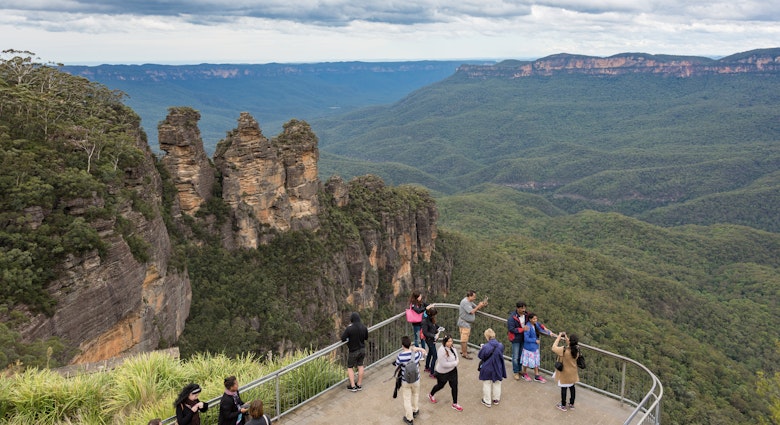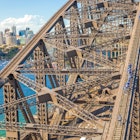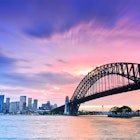
Explore the sustainable paradise of Lord Howe Island
Aug 16, 2019 • 4 min read
Few Australians are aware that New Caledonia, a fully-fledged French overseas territory, is closer to Sydney than Auckland in New Zealand. Just as intriguingly, about half as close again – 741km from Brisbane or 779km from Sydney – the isolated volcanic outcrop of Lord Howe Island is a part of Australia that many Aussies have never heard of, let alone visited. In the middle of nowhere, rising like a King Kong movie set above the rippling South Pacific, Lord Howe is a quirky and environmentally unique outlier of the land Down Under.
A history of isolation
Historically, Lord Howe somehow sidestepped the great waves of Polynesian, Melanesian and Micronesian outrigger explorations, which criss-crossed the South Pacific from around 3000BC. Similarly, indigenous Australians, who have occupied the Australian mainland for some 60,000 years, never reached the shores of Lord Howe. The island was left to its own human-free evolutionary devices until 1788 when Lieutenant Henry Ball, onboard the British ship HMS Supply, eyeballed the island’s lofty peaks en route to the similarly remote Norfolk Island. In true British naval tradition, Ball named the island after Earl Richard Howe, then Lord of the British Admiralty.
A whaling base was permanently established on Lord Howe in 1834. When the whale population thinned out, a plant export industry kicked off: the endemic Kentia palm (Howea forsteriana) proved to be the Western bourgeoisie’s indoor plant of choice for much of the 20th century. But the island’s population has remained static at a tick under 400 residents for as long as anyone cares to recall.
A focus on sustainability
Today, tourism is the main industry with numbers capped at a democratic 400 at any one time (can’t have the visitors outnumbering the locals, can we?). The environment here is precious, earning Unesco World Heritage status in 1982. The island is classed as subtropical (31.5° S) but sustains the southernmost coral reefs on the planet – glorious technicolour mazes encircling the island’s mesmerising lagoon, overrun with large, colourful fish and turtles (great snorkelling, diving, kayaking and paddleboarding awaits you here). Birdlife thrives here too, including the endemic Lord Howe woodhen (Gallirallus sylvestris) – a slow-roaming flightless bird which, unlike the Mauritian dodo or New Zealand’s moa, is endangered but not yet extinct.
The main threat to the woodhen and its feathered friends is the feral black rat, introduced via the shipwreck on the SS Makambo on Ned’s Beach in 1918. Rats have put paid to five other endemic Lord Howe bird species and couple of plants over the past century, but are now the subject of an ambitious eradication initiative. Almost 20 years of planning and (at times divisive) discussion has culminated in a baiting programme which commenced in mid-2019. It’s hoped that by the end of this year, Lord Howe will be rat-free.
It was believed that another species done in by way of rats – the 20cm-long Lord Howe stick insect (Dryococelus australis) – had indeed gone the way of the dodo. Then, in 2002, a remnant population of 24 was rediscovered on Ball’s Pyramid, one of Lord Howe’s rocky offshore atolls (named after Lieutenant Henry Ball – the British establishment's work once more). Stick insect numbers have since recovered through dedicated zoo breeding programs around the world, but the chubby black critter is still often referred to as the world’s rarest insect.
Unplugging on Lord Howe
With airfares, accommodation and food costs still quite high – even in low season (June to August, the southern winter) it costs around AUD$600 each way to fly here, AUD$250 a night for a simple motel-style bed and AUD$5 for a litre of milk – the island vibe remains refreshingly uncrowded, unhurried and unpretentious. There’s limited phone coverage and barely any internet access, and most accommodation – aside from the elegant Pinetrees Lodge – is locked in a stylistic time capsule. This is a place to change down a gear or three, decompress and destress, a place to put your phone away and pick up a book.
Finding the island's peaks
It may take a couple of days for the full majesty of Lord Howe’s peaks, beaches and glorious lagoon to sink in – this is nature on a grand and glorious scale – but once you’ve changed down to island time, reward yourself with a day-hike to the top of Mt Gower, the island’s 875m highpoint. Often shrouded in clouds, the peak has its own microclimate and rain shadow, and the views from the top are unforgettable.
Getting there & around: tiny planes and bikes
Getting to Lord Howe is part of the adventure: it’s two-hour flight from Australia’s east coast in a propeller-driven Dash 8 plane across open seas, touching down on a stunted, ocean-flanked landing strip on one of the island’s few flat spots. Then, after a shuttle bus has transferred you to your accommodation, Lord Howe becomes blissfully vehicle-free. Follow the 'crowds' to the bicycle-hire shop and pick up some wheels: you can traverse much of the island’s compact 14.55 sq km on sealed roads (breaking the island’s 25km/hr speed limit is a challenge).
https://shop.lonelyplanet.com/products/australia-travel-guide-19
Explore related stories

Beaches
These 5 day trips from Sydney will show you the splendors of New South WalesNov 22, 2024 • 7 min read



 Festivals & Events10 of the world's best places to celebrate New Year’s Eve
Festivals & Events10 of the world's best places to celebrate New Year’s EveNov 13, 2024 • 7 min read

 CyclingHow to plan a biking trip to New Zealand’s Southern Lakes and Central Otago regions
CyclingHow to plan a biking trip to New Zealand’s Southern Lakes and Central Otago regionsNov 11, 2024 • 4 min read


 Destination PracticalitiesSydney by Season: Your Monthly Guide for Sightseeing and Adventure
Destination PracticalitiesSydney by Season: Your Monthly Guide for Sightseeing and AdventureNov 7, 2024 • 7 min read
